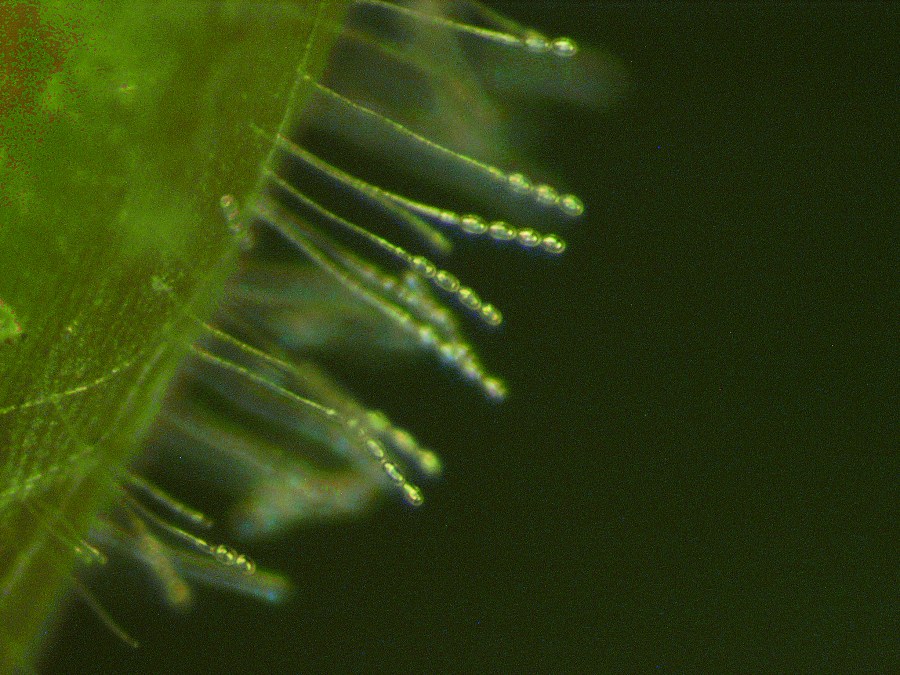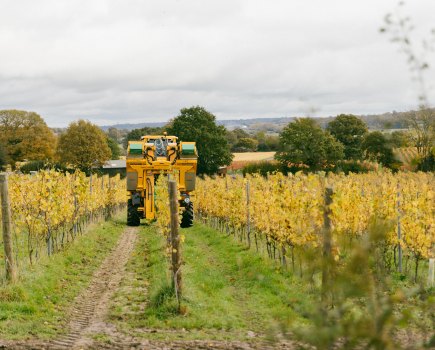Grape powdery mildew disease, caused by the fungal pathogen Erysiphe necator is a destructive disease which threatens vineyards worldwide and infection levels as low as 3% can taint the wine and give off-flavours.
Vigilance as the canopy develops and frequent crop-walking of every part of the vineyard are essential.
It is a disease that can easily catch you out as it sneaks along slowly and steadily inside the canopy until it suddenly appears when a spell of conducive mild cloudy weather comes along.
In dry conditions it often remains unnoticed in shaded parts of the canopy. Optimum temperature for disease development is 20-28°C, the fungus produces about twice as many spores beyond relative humidity of 40% but is killed by exposure to UV light.
Canopies open to airflow and UV light are therefore at less risk of powdery mildew development while dense, shaded canopies provide a favourable microclimate.
Tough experience
It’s brave to admit to having a problem but the experiences of Fiona and Bernie West last year in their vineyard in the foothills of the South Downs, a mile from the sea, are salutary.
July 2023 was wet and warm. As they started leaf stripping Fiona noticed a few grey patches on leaves, but as Bernie was applying a full spray programme they were not overly concerned.
Fiona recalls finding a small, isolated patch of powdery mildew at the top of the vineyard in the previous year and, knowing the importance of hygiene, collected and disposed of all the infected grapes well away from the vineyard, then burnt the prunings from the area.
With the benefit of hindsight, she said: “We didn’t walk the rows and inspect enough during July. Vigilance is key.”
By the beginning of August all the Bacchus berries were grey with mildew and the disease was out of control and they lost the whole crop.
It was a soul-destroying experience for the Wests, not to mention the cost of having to remove trailer loads of infected fruit and send it away to be composted. They estimate they lost 15 tonnes of crop.
Bernie reflects that their site is more humid than they originally thought, and that the sprayer wasn’t working properly.
“The sprayer has now been serviced and all the nozzles cleaned. This year I’ll use indicator papers in the canopy to check all is working correctly.”
To reduce subsequent disease pressure the prunings have been racked up and will be mulched in the alleyways although ideally, they hope to obtain a bonfire licence so they can be burnt.
Fungicide sprays
There will be an increase in the number of fungicide sprays in 2024 and they plan to be even more careful with canopy management and leaf stripping.
Fiona and Bernie want to make sure that by sharing their experience they can help others avoid disease problems.
The level of powdery mildew that you inherit into season two depends on how much disease you allow to develop in season one. The spores that most influence your vineyard in early season come from your vineyard and you can control these.
Vineyards worldwide use sulphur to control powdery mildew. To date, the disease has not developed resistance to ‘Man’s oldest fungicide’, despite centuries of use.
Commonly used sulphur products are liquid Thiopron and powder Microthiol which have effective volatile (fumigant) activity at temperatures over 20°C.
Agrii viticultural specialist Ben Brown advises: “Always apply sulphur preventatively, ideally repeating applications after rain events though modern liquid sulphurs are more persistent and can build-up too much over time if you aren’t careful.
“Higher rates of sulphur can be curative but powdery mildew spreads rapidly so it’s always best to be ahead of this.”
Leaf stripping
If you do run into problems Ben said the best thing to do is improve canopy management: “Leaf strip post outbreak – improving airflow is key – powdery mildew loves humid conditions hence it’s such an issue in the UK in wet summers.”
When it comes to spraying, Ben emphasised that sufficient water volume for good coverage is key to good control.
He also said: “We are starting to see better kickback activity from products like Cosine (cyflufenamid) and highlighted:
“In organic vineyards Amylo-X (Bacillus amyloliquefaciens subsp. plantarum strain D747) has a useful place preventatively and it works well positioned in between Botector (Aureobasidium pullulans strains DSM 149400 and 14941) sprays for botrytis for that dual control.
“Karma (potassium hydrogen carbonate) is really useful later in the season for firefighting and has been used between sulphur sprays post outbreak to bring things back under control”.
Alex Cooke, technical account manager for horticulture at Certis Belchim emphasised the importance of canopy management and deploying an Integrated Pest Management (IPM) strategy.
Resistance management
He added that utilising biorational fungicides Amylo X and Karma in an IPM programme with conventional fungicides like Cosine brings the variety of modes of action needed for resistance management, while being safe to beneficials and reducing residues.
“Karma’s formulation includes adjuvants to speed up sprayer filling and optimise leaf coverage and adherence, while Cosine combines both preventative and curative activity.
“Cosine’s unique vapour action also helps to get the product to areas of the plant where it might otherwise be difficult to achieve good coverage,” said Alex.




